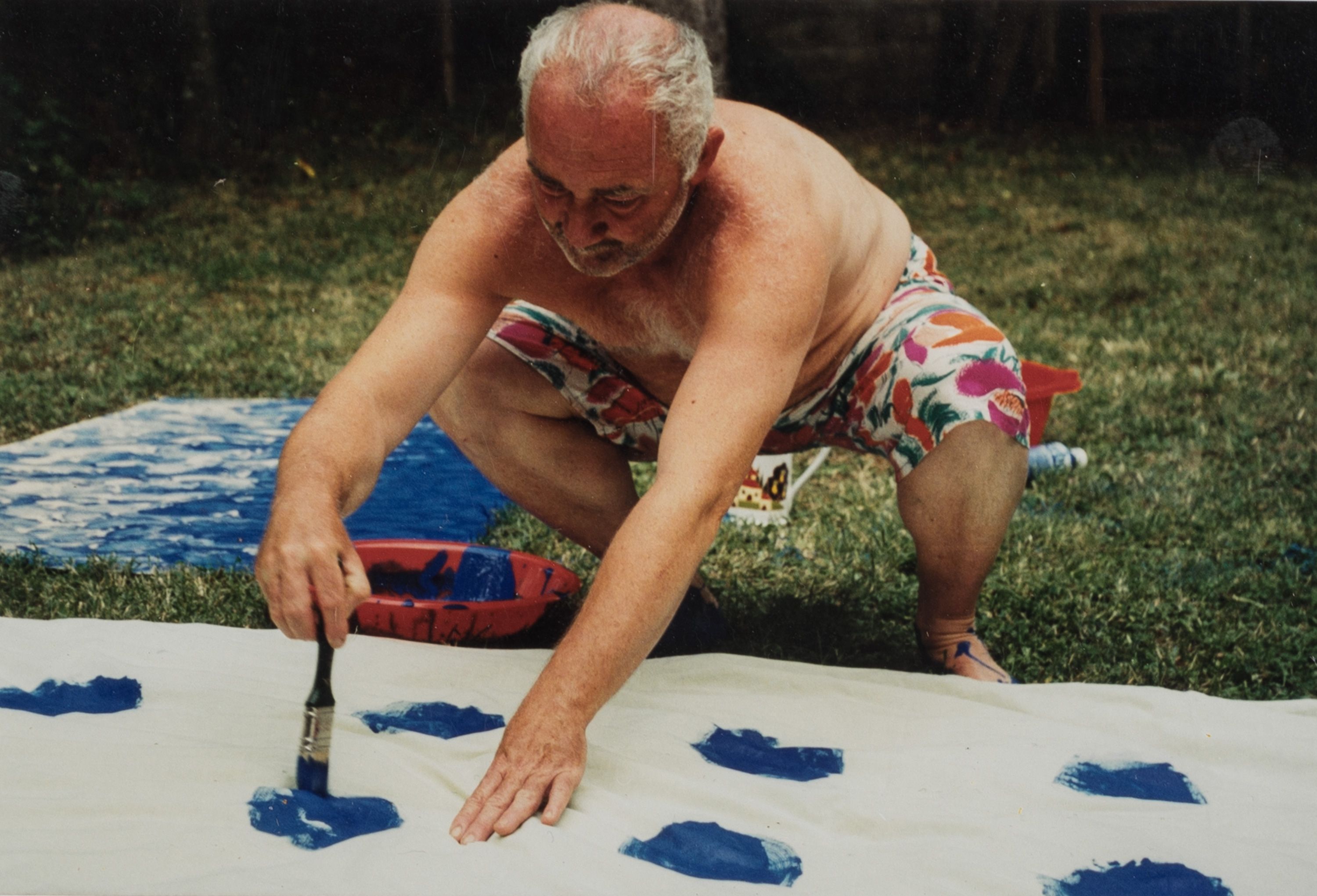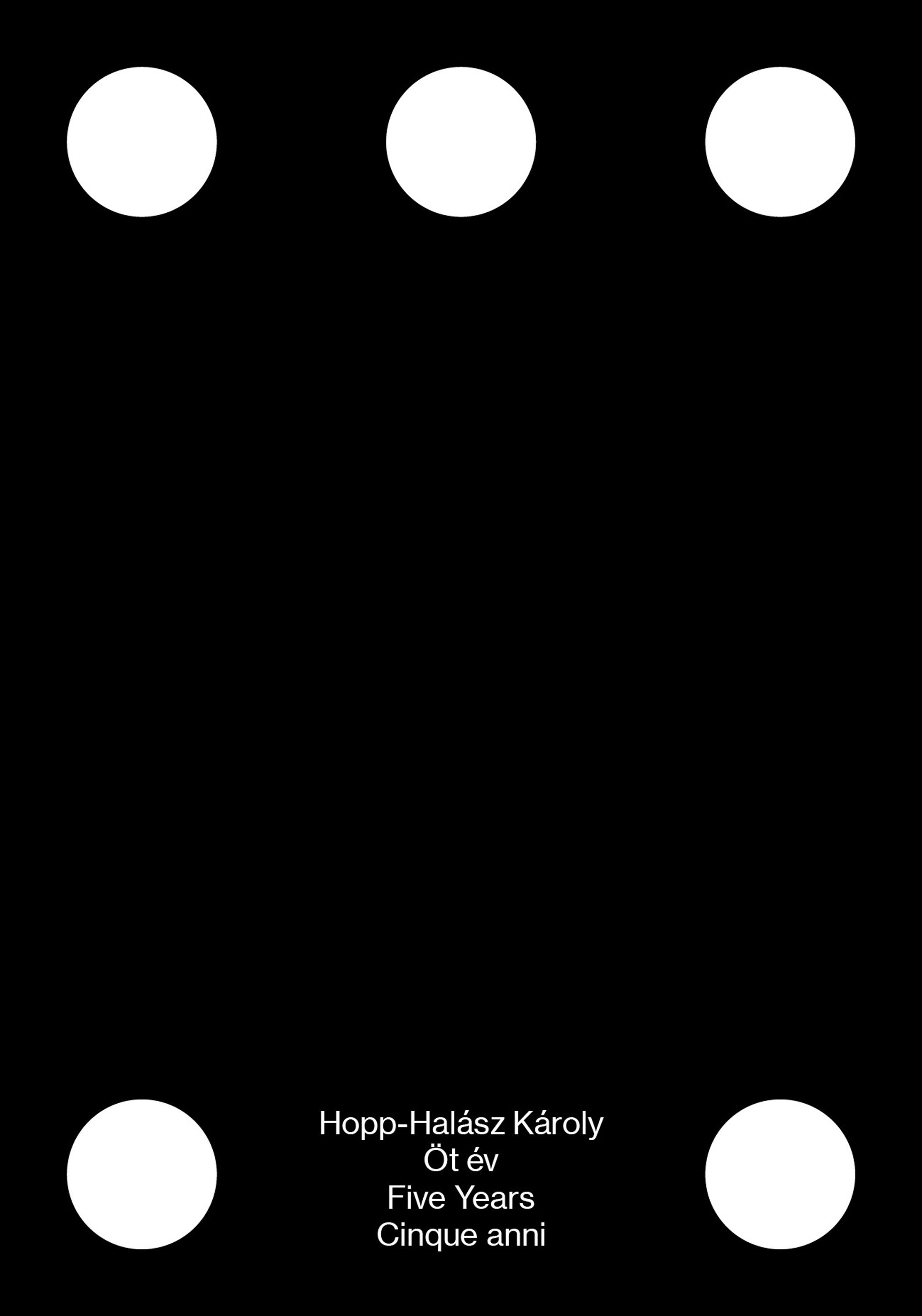Károly Hopp-Halász
Five Years
| Venue: | acb Gallery |
| Date: | Nov 12 – Dec 10, 2021 |
| Opening: | Nov 11, 2021, 19:00 |
Description
Károly Hopp-Halász began his career in the late 1960s as a member of the Pécs Workshop, formed by a group of Ferenc Lantos’s students, who combined the traditions and contemporary forms of geometric art with the tendencies of land art. Hopp-Halász studied and worked in Pécs, then, in the late 1970s, moved back to his parents’ home in Paks. In 1979, he initiated the Experimental Visual Art Camp of Paks and, in the beginning of the nineties, he founded Art Gallery Paks. The traditions and new methods of constructivism have equally left their mark on a career diverse in both media and subject matter, where, alongside painting, the dominating medium, photography, photo-action and performance, graphic art, object art and installation also feature prominently. As Márta Kovalovszky put it, “[H]is desire to reach a classic picturesque expression through simple geometry”, to pass geometric thinking through a personal filter, signified a cornerstone in Hopp-Halász’s path as an artist, leading him to create a private mythology of recurring motifs and themes.
The concept for the exhibition held at the acb Gallery, dedicated to the artist’s memory who passed away five years ago, was developed in collaboration with Franco Dagani. By showcasing outstanding and mostly rarely seen works (and groups of works), the exhibition seeks to explore and nuance the issues that the artist found most engaging – the problems of geometric imagery and of relating to the human body. The specific symbolism in Halász’s use of colour (red, blue, yellow), set up by Dagani, also played a role in the selection.
In this manner, the exhibition sets up a narrative starting from the artist’s early enamel works, mainly created under the spell of op art and, then, pop art. This “narrative” leads through Hopp-Halász’s so called “pipe” pictures (which resulted from an illusory processing of axonometric cube representation), and his Structure variations (which emerged from the High Stand theme that have become inseparably linked with the artist’s name), to the various manifestations of the dot (round, full form) as a basic element of Hopp-Halász’s mythology, and to his Open Geometry works, which combine the male body with geometric forms in the most powerful manner.
The dot – which became not only the central motif in Hopp-Halász’s neo-geo works but also a symbol of the kind of “strict” geometric thinking that sought a connection with the upsurge in painting seen in the 1980s – gradually took on a life of its own in the artist’s repertoire of tools. To Károly Hopp-Halász, his use of the bundle as a decorative element – which symbolises being sent on one’s life journey, and, as such, is often used in Hungarian school graduation ceremonies – with its form also signifying additional layers of meaning in his personal history, came to represent setting off an a path, travelling, the difficulties encountered along the way, and, quite certainly, freedom itself. Next to the suitcase, the stick and bindle also represented the artist’s own marginal position and the distance he felt from the Hungarian – and especially international – centres of art. Like the signposts, which symbolise geographical distances as well as the experience of “being on the road”, the artist’s works built from the pulsating mass of trampled footprints (his hallmark gesture) – at times fused to create a monochrome surface – also reflect on this defining feature of his art. During a performance in Tuscany in 1994, the motifs merge in a unique manner, so that the sequence of events ends with the total metaphor of the artist’s body enveloped in a polka-dot patterned bundle.
In his works entitled Mini Museum and Shelf Museum (inspired by the “artist museums” presented in Kassel at the documenta curated by Harald Szeemann in 1972), the artist – who had always paid close attention to movements in Western art – not only created and preserved his own “avantgarde museum”, but also collided it with the private, domestic sphere and the object environment of traditional rural existence. The multilayered nature of Hopp-Halász’s oeuvre is revealed not only by the items of his “imaginary museum”, presenting forms and artworks that encapsulate his personal artistic preferences and the influences that affected him, but by the critical tone of his works created by manipulating television and the broadcast image, and also by the political undertones of High Stand and its variations. This elevated structure built for aiding hunting gained new interpretation in the artist’s works by invoking Kassák’s image architecture procedures. Through the tension emanating from the composition, the structure created by the meeting points and variations of horizontals, verticals and diagonals reflected conditions in ‘70s Hungary: the wider cultural-political context expanded the possibilities of interpretation towards a metaphorical reading of the everyday presence of monitoring and control.
In the first half of the 1970s, photo-based works and photo actions became a common medium in Károly Hopp-Halász’s art. Modulated Television, Private Transmission, and his series opening up more personal dimensions through the use of powerful captions (Help, Love) also address questions of surveillance and being watched. The substitution of the television-broadcast image with the artist’s own body marks a turn in perspective towards criticism of the media, while signifying one of the first attempts in Hungarian art to thematise the male body and the heteronormative male image. In the conceptually based series Modulated Television, the broadcast image interacts with the geometric structure superimposed or drawn on it, thereby manipulating both the televised image and the viewer’s perception of it.
Impressions of the riverside and the closely familiar landscape of Paks are also given emphasis in the exhibition, providing a kind of framework for the presented material. The trajectory of this multifarious oeuvre – which nonetheless retained its consistent definition in geometric and mathematical modelling – is drawn up between a blue-toned landscape from 1962, most reminiscent of Paul Klee’s works, and a piece from the 2010s that was left unfinished, radiant with the glow of sunlight on the Danube.
By exploring these connections, the exhibition aims to provide a comprehensive picture of the approach that defined Hopp-Halász’s art, regarding geometry and image structures, viewed as tools for interpreting reality, and their relationship to the factors and conditions – including mass communication – that determine human existence.
The exhibition is accompanied by a catalogue booklet published by acb ResearchLab.
The exhibition has been supported by the National Cultural Fund.


